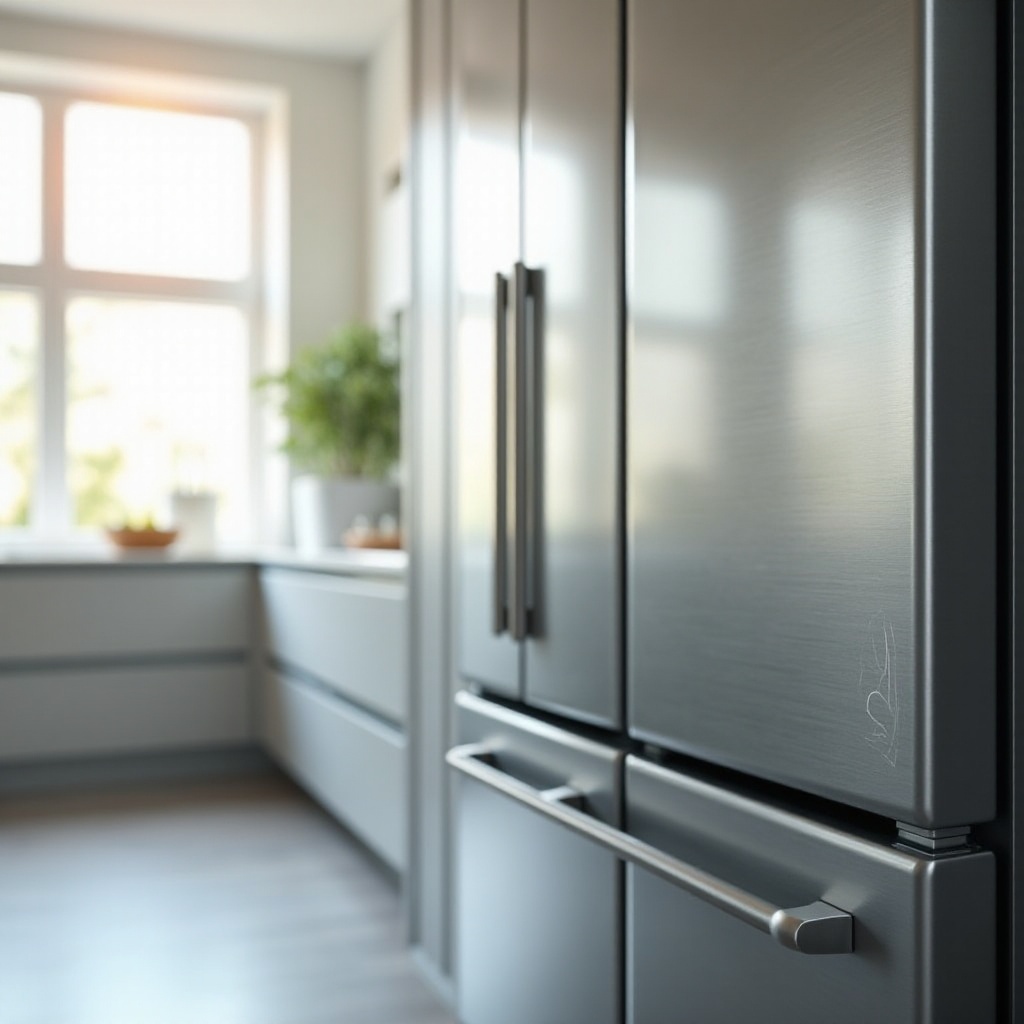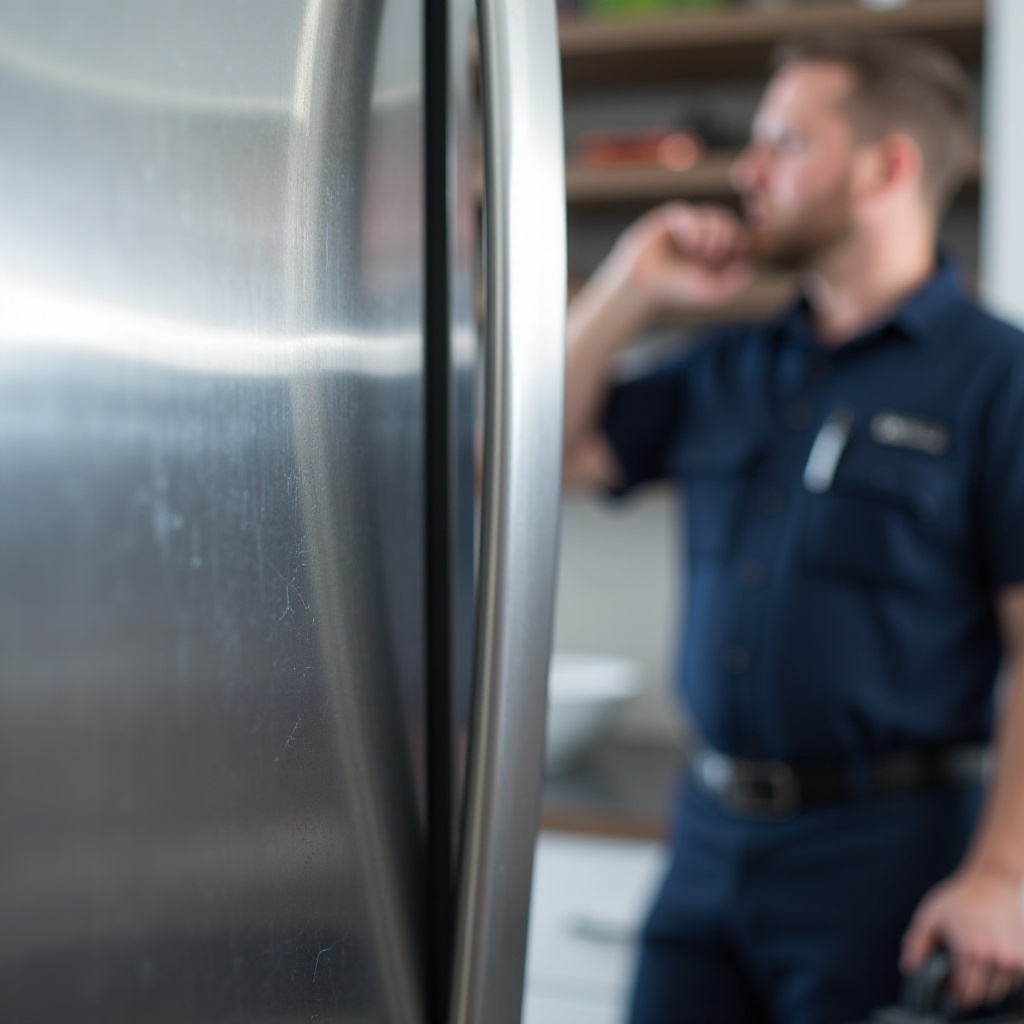Introduction
Scratches on your stainless steel refrigerator can be frustrating and unsightly. Stainless steel is a popular material for refrigerators due to its sleek, modern appearance and durability. However, along with its stylish look, it can be prone to scratches and blemishes over time. Whether you have small hairline scratches or deep gouges, there are effective ways to repair them and restore the pristine look of your appliance.

Understanding Stainless Steel Finishes
Stainless steel finishes play a crucial role in both the appearance and maintenance of your refrigerator. These finishes include brushed, mirrored, and matte. Each finish requires different care methods to maintain its beauty.
Common Types of Finishes
Stainless steel can have various finishes, and knowing which finish your refrigerator has is essential for choosing the correct repair method. Brushed stainless steel has a grainy texture, while mirrored finishes are shiny and smooth. Matte finishes do not reflect light, providing a non-glossy appearance.
Why Finishes Matter
Understanding the type of finish on your stainless steel refrigerator is crucial because it influences the repair approach. Using inappropriate repair techniques can potentially worsen the scratches or create new ones.
Assessing the Damage
Before jumping into the repair process, it’s important to accurately assess the damage. This step ensures that you use the right methods and tools to address the specific type of scratch your refrigerator has.
Identifying Hairline vs Deep Scratches
- Hairline scratches: These are thin and shallow and often result from daily usage.
- Deep scratches: These are more noticeable and can be felt when running a finger over them.
The Importance of Damage Assessment
Evaluating the degree of the scratches helps in determining the correct repair method. Minor scratches can often be remedied with simple DIY solutions, while deeper scratches might require more specialized tools or professional help.
Essential Tools and Materials
Gathering the right tools and materials before starting the repair ensures a smooth and effective process. Here are some common household items and specialized kits you might need.
Household Items You Can Use
- Soft cloths
- Non-abrasive cleaners
- Baking soda
- Olive oil
Specialized Repair Kits
For more severe scratches, investing in a stainless steel repair kit can save time and yield better results. These kits typically include all necessary items such as sanding blocks, specialized cleaning solutions, and repair compounds.
Step-by-Step Repair Process
To effectively repair scratches on your stainless steel refrigerator, follow these detailed steps:
Repairing Hairline Scratches
- Clean the Surface: Wipe the refrigerator surface with a non-abrasive cleaner to remove any dirt or grime.
- Buff with a Soft Cloth: Use a soft cloth with a few drops of olive oil. Buff the scratched area in the direction of the grain.
- Use a Metal Polish: Apply metal polish with a clean cloth and buff until the scratch diminishes.
Steps for Deep Scratch Repairs
- Sanding the Scratch: Using a fine-grit sanding block, gently sand over the scratch following the grain of the stainless steel.
- Applying Repair Compound: Apply a stainless steel repair compound or paste as directed by the manufacturer.
- Buff and Polish: Once the compound sets, buff the area with a soft cloth and polish to a shine.
Buffing and Polishing Techniques
For both types of scratches, buffing and polishing are vital steps. Always use soft cloths and ensure to follow the grain to avoid causing additional damage.
Homemade Solutions and Their Effectiveness
If you prefer DIY solutions, several household items can effectively repair minor scratches on stainless steel.
DIY Mixing and Application
- Baking Soda Paste: Mix baking soda with water to form a paste. Apply to the scratch and gently rub with a soft cloth.
- White Vinegar: Dampen a cloth with white vinegar and wipe the scratched area.
Pros and Cons
Though these methods are cost-effective and convenient, their effectiveness may vary depending on the depth of the scratch. They are generally better for minor scratches and may not provide long-lasting results for deeper scratches.
Preventative Measures
Once your refrigerator is scratch-free, taking preventative measures can help maintain its look.
Routine Maintenance Tips
- Regular Cleaning: Clean with non-abrasive solutions regularly to prevent buildup and new scratches.
- Use Soft Clothes: Always use soft, microfiber cloths to clean the surface.
Using Protective Coatings
Consider applying a protective coating designed for stainless steel surfaces. These products can help reduce future scratches and make cleaning easier.

When to Call a Professional
While many scratches can be repaired at home, some instances might require professional intervention. If you’re uncertain about the repair method or the scratches are too deep, seeking professional help can ensure your refrigerator is restored effectively.

Conclusion
Repairing scratches on your stainless steel refrigerator is a manageable task with the right knowledge and tools. By following the steps outlined in this guide, you can restore your refrigerator's sleek and polished appearance. Remember to assess the damage correctly and use the suitable methods for the type of scratches you have.
Frequently Asked Questions
Can all scratches be repaired at home?
Most minor scratches can be repaired at home with household items or specialized kits. However, very deep scratches may require professional repair.
What household items are most effective?
Household items such as baking soda, white vinegar, and olive oil are effective for minor scratches.
How often should I maintain my refrigerator?
Regular maintenance should be done weekly, with thorough cleaning and inspections at least once a month to prevent scratches and maintain appearance.
